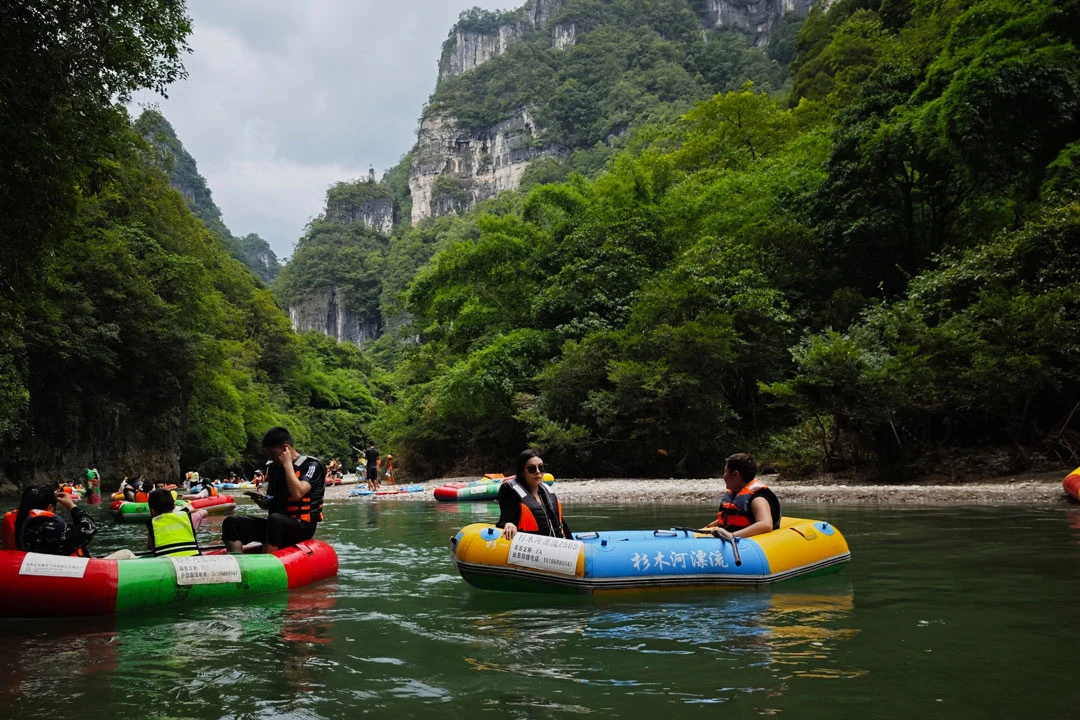From Niche to Mainstream: Paddleboarding and Kayaking Sweep Across Chinese Cities
In the sweltering heat of a Chinese summer, a quiet revolution is taking place on the waterways of major cities. Once considered niche activities reserved for coastal areas, paddleboarding and kayaking are now making a splash in urban centers, transforming cityscapes and leisure habits alike.
The scene at Jincheng Lake in Chengdu on a typical weekend is a far cry from what it was just a few years ago. Today, the serene waters are dotted with colorful boards and sleek kayaks, piloted by enthusiasts of all ages. This surge in popularity isn't limited to Chengdu; similar sights can be observed in parks and lakes across China's major cities.
The catalyst for this water sports boom is multifaceted. Social media platforms like Xiaohongshu and Douyin have played a crucial role, with thousands of posts showcasing the appeal of these activities. The visually striking nature of paddleboarding and kayaking, set against urban backdrops, has created a perfect storm of Instagram-worthy content that continues to draw newcomers to the sport.
But it's not just about the aesthetics. The ongoing Paris Olympics have added fuel to the fire, with Chinese athletes making waves in various water sports disciplines. The success of young surfer Yang Siqi and the gold medal-winning performance of Liu Hao and Ji Bowen in the men's canoe double 500m have inspired a nation. Suddenly, sports that once seemed foreign are now sources of national pride, spurring interest across generations.
Olympic Inspiration Fuels a New Generation of Water Sport Enthusiasts
This newfound enthusiasm has not gone unnoticed by entrepreneurs and city planners. Rental clubs and training centers have sprung up around urban water bodies, offering equipment and lessons to curious novices. Luo Ming, a coach at a kayaking club in Jinjiang District, has observed the shift firsthand. "Five years ago, these sports were mostly confined to coastal areas like Beijing or Qingdao," he notes. "Now, they're becoming mainstream even in inland cities."
The demographic driving this trend is particularly interesting. According to industry insiders, over 70% of participants are families with children. This aligns perfectly with China's growing emphasis on healthy, active lifestyles and unique educational experiences for youth. Parents see water sports as an opportunity to bond with their children while instilling valuable skills and a love for the outdoors.
Local governments are also riding this wave of enthusiasm. The outdoor sports industry development plan for 2022-2025 explicitly calls for expanding access to natural resources for such activities. Cities are responding by integrating water sports facilities into urban planning, turning once-overlooked waterways into vibrant recreational spaces.
This transformation is having a ripple effect on local economies. Beyond equipment rentals and lessons, the influx of water sports enthusiasts is boosting adjacent businesses. Cafes, restaurants, and shops near popular paddling spots are seeing increased foot traffic. Some areas are even developing into full-fledged "water sport hubs," with associated services like specialized gear stores and waterfront accommodations.
The economic potential is significant. According to industry reports, water sports equipment accounted for nearly 20% of the outdoor gear market in 2023, second only to skiing. As more Chinese cities embrace these activities, this figure is expected to grow substantially.
However, the rapid growth of urban water sports is not without challenges. Safety concerns are paramount, especially given the number of newcomers to these activities. Clubs and rental agencies emphasize the importance of proper training and equipment, particularly for families with children. There's also the question of environmental impact, as increased human activity on urban waterways could potentially disturb local ecosystems.
The Ripple Effect: How Urban Water Sports are Transforming Leisure and Local Economies
The future of urban water sports in China appears bright. As cities continue to invest in waterfront development and recreational facilities, opportunities for paddleboarding, kayaking, and other aquatic activities are likely to expand. The integration of these sports into urban life represents a fascinating shift in how Chinese city dwellers interact with their environment, blending the natural and the urban in new and exciting ways.
Moreover, the rise of urban water sports in China offers a glimpse into broader trends in recreation and lifestyle. It reflects a growing desire for outdoor experiences that don't require leaving the city, as well as a shift towards more active, experiential forms of leisure. As these trends continue to evolve, they may well reshape not just how Chinese urbanites spend their free time, but how cities themselves are designed and developed.
From the tranquil lakes of Chengdu to the bustling waterways of coastal metropolises, China's urban water sports revolution is making waves. It's a testament to the country's ability to rapidly embrace and adapt new trends, turning what was once a niche coastal pastime into a nationwide phenomenon. As summer temperatures soar, more and more Chinese citizens are discovering the joy of gliding across urban waters, creating new traditions and transforming their relationship with the cities they call home.



